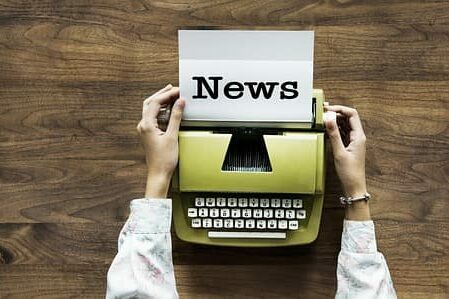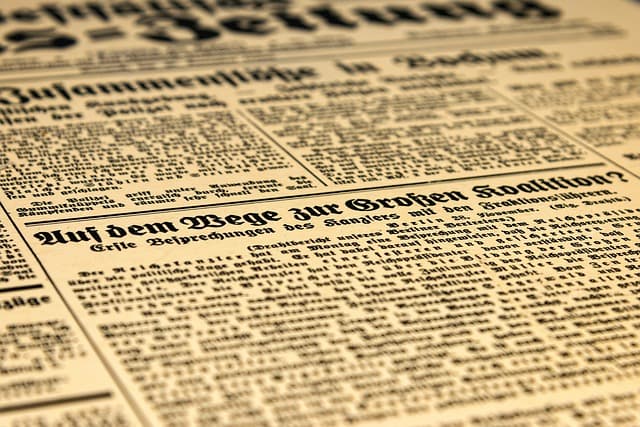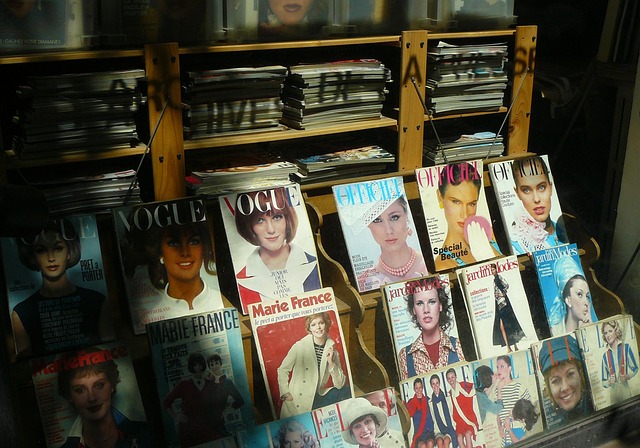How to Get an Interview
We set the goal, compose the questions, build communication.
A good interview seems simple and easy to read. But behind this “airiness” is a complex flow, in which every detail plays a big role. And without good preparation, the whole process can fail.
There are many difficulties of preparation. For example, it is not always clear what form the interview should take. And it’s not clear what to ask someone who’s already done dozens of interviews – or someone who hasn’t done any.
We will tell you how to collect information about the hero, what the questions should be and what to do if the speaker is silent.
Why interview?
Interviews are probably the most popular genre and the basis of journalistic work. Almost any material requires an interview. If it is not published as a conversation, it becomes the basis for a profile or a guide, a factual basis for a reportage or an investigation. That is why the ability to conduct interviews is almost the main hard-skill of any journalist.
Text interviews are the most common (and this guide focuses on them as well). But the final material does not always come out as text – there can be an audio or video format. The conversation itself is almost the same – the differences are mainly in post-production. If you conduct an interview on camera or with an audio recording, check the requirements of the cameraman and the sound designer: they will tell you how best to turn to the camera and how to behave during the conversation.
The trajectory of the interview
A conversation with a character usually takes 20-40-60 minutes – of course, everything depends on the context and conditions, but most often it does. But in order for this dialogue to happen and be productive, you need to prepare properly. Go to these points:
Step 1. Define your purpose.
It’s important to understand what you want to say in the interview. Of course, audiences come for different things: some want to know more about their idol, some just want to get to know that person, some have an in-depth understanding of a topic, and some want to resolve their doubts about a burning issue.
The demands of the audience influence the goals of the interview. More often than not, they are as follows:
- To paint a portrait of the character. This portrait can be generalized if the speaker is not very famous and the audience gets to know him or her for the first time, or deep and specific if he or she appears frequently in the public field and gives many interviews.
- Cover an expert topic. If the emphasis is on this, the interview should be with an expert – the topic and the experience of the speaker will be more important than his or her personality.
- Talk about the project. In this case, you and the person discuss a specific occasion: a book, a movie, a hero’s charity project.
Depending on the purpose, the format is chosen. There are not many of them:
- Question-Answer. Choose it if the questions are concrete and cannot be painlessly removed from the text or if the journalist’s position in the conversation is also important. For example, you and the hero are having a discussion and you are also expressing your point of view.
- Collective interview. Same as question and answer, but there are several speakers and they answer the same questions. Choose it if you are interviewing several people at the same time and/or they are discussing the topic with each other in the process.
- Monologue. Questions are cut out, the speaker’s speech is stitched together as a solid text. This format is suitable for creative biographies and expert texts if the topic is broad enough and the journalist asks general questions.
- Profile. We write about the hero in the third person, interspersed with direct speech. What matters here is the skill of constructing a plot and the ability to turn a lengthy story into a coherent and catchy one.
Step 2: Learn all about the hero and the theme.
You can never have too much information. If we are talking about an expert topic, of course, it is better if the journalist also knows about it. Usually there is a tacit specialization in editorial offices: for example, one writes about graphic design and illustration, another – about advertising, another – about technology.
But there are topics or emphases that the journalist has not (yet) dived into. If the direction is new to you, you need to:
- Understand the topic as a whole. Understand the key terms, identify the leading experts and important processes.
- Scour the agenda. Find out what has been happening in the field lately. If it is a particular news item, study its history, different positions and theories.
- Understand what has been written and written about it. To understand which sides of the topic have been covered, and which sides have been left in the shadows. This is necessary to avoid repetition and to make the conversation unique.
If you’re talking about a person, you have to prepare along the same lines. Read and watch as many interviews of your hero as you can, scroll through social networks, and don’t stop at the first page of a Google search: information from years ago can show a different side of the person.
What to look for when gathering information:
- Biography – it’s best to write it down in abstract, especially if you don’t know the character well.
- Frequent topics – what the character is talked about most often. Look for what you can pull out that hasn’t been asked yet, if there are uncovered topics (something interesting that has been mentioned in passing).
-. How the character communicates – this will help you build a communication strategy: choose a more formal or informal style, avoid questions that could ruin everything – or, on the contrary, go for a conscious provocation.
Sometimes the hero is non-public, and there is no freely available information about him. And you he will tell a private story that no one else really knows about. In that case, set the scene well: what of the hero’s life is particularly important to you, what the plot can be and what you need to lead the reader to. And you can also ask the speaker a couple of questions before the interview, so that you understand who you are going to communicate with.
Step 3: Make a list of questions
The questions depend on the purpose of the interview-it’s important to structure them so that they really explore the topic and lead to where you want them to go. Organize them in a logical sequence – so that the conversation flows smoothly from one question to another. It is not necessary to follow this order during the conversation, but a cheat sheet will not be superfluous.
If you’re planning a question-and-answer format, write the questions more clearly and sequentially – this will be less of a problem when editing. Formulate open-ended questions – with “how?”, “who?”, “when?”, “why?”, so that the conversation doesn’t drown out, but fires up. And if you ask closed questions (with a “yes” or “no” answer), add “why?” right away.
If you run out of questions on the topic, ask more:
- About the infomercial – that’s a handy way to start a conversation
- About what the audience cares about – think about what readers might be discussing in the comments to this interview, and ask the hero about it
- About things that haven’t been asked yet – to reveal a new side of the hero (but within the limits of logic and ethics)
- About something that interests you personally – perhaps you have your own opinion on the subject, which you can pack into a question
It doesn’t all have to be on the list: most importantly, focus on the purpose of the interview. Send the speaker questions if you’ve agreed to agree on them before the conversation.
Step 4: Conduct the conversation.
So you know everything about your hero: how the man talks, what his background is, what to ask him about. Now all that’s left to do is talk – and get the material to work.
There’s a point that can derail everything: if the conversation doesn’t get recorded, the material will be at risk – you’ll have to explain a lot, apologize, over-explain, (possibly) write from memory, or give up on the material. So check the charge level on your phone or recorder, position it close to the hero – and warn them that you’ll be recording.
If the speaker rarely gives interviews and is afraid of recording, explain: “It is necessary to convey the speech accurately. It won’t go into the public domain. After publication do not delete the recording: if there are any complaints that the words were not accurately transmitted, you can check and prove that the quotation is correct.
If you interview remotely, talk the speaker into a video link, call, or voice message. Dodge the written interview format – more often than not, it feels plastic. Written responses only work for short comments and official agency responses.
A well-conducted conversation is 80% of a quality text. Attention, interest and the ability to gain the hero’s trust are important. Therefore:
- Let the hero relax – start with a small talk before asking the questions on the list.
- Start with general questions and only then go on to clarify details.
- Clarify numbers, names and organizations right away-it will be harder, if not impossible, to do later.
- Cling to words and redirect the hero to his own phrases. Paraphrase if a good point is not clearly articulated: “Am I correct in assuming that…?”
- Watch the time, especially when it’s limited. When it’s not, watch it too: the hero can get tired if the conversation gets blurry.
- Be polite and respect the hero’s personal boundaries-so you’ll be told more.
- Clarify what should be left off record. It’s not just being polite: the hero has the right to leave some of his words off the record. Only this he must warn you about. If he forgets and you publish everything, you and the media may have problems.
- End on a positive note – this may not be the first story you do together, and a good relationship will come in handy.
The reality is that an interview is an unpredictable thing; anything can go wrong. Be prepared for the fact that some questions may be irrelevant to the character or to the course of the actual conversation – so don’t be afraid to improvise.
After the interview
When the conversation is over, work on the final piece begins. If it’s a text, it goes like this:
- Transcription – allow four hours for one hour of the interview.
- Assembling the text – choose the main thing and brush up on what’s distracting and irrelevant, pick up references-ruffles, reread the text and write a headline (or pick the best short quotes from the text).
- Edit – give the text to an editor and make edits after the editorial proofreading.
- Approval – show the text to the speaker, if you agreed to coordinate it before publication, to approve the fact.
When the material comes out in audio or video format, the work may be structured differently: for example, if subtitles are needed, the transcript is done – but after editing. As a rule, the journalist does not edit the interview himself and is less involved in production (although it depends on the composition of the team).
But that’s another story. And it will definitely go quickly and easily if the conversation was successful.


